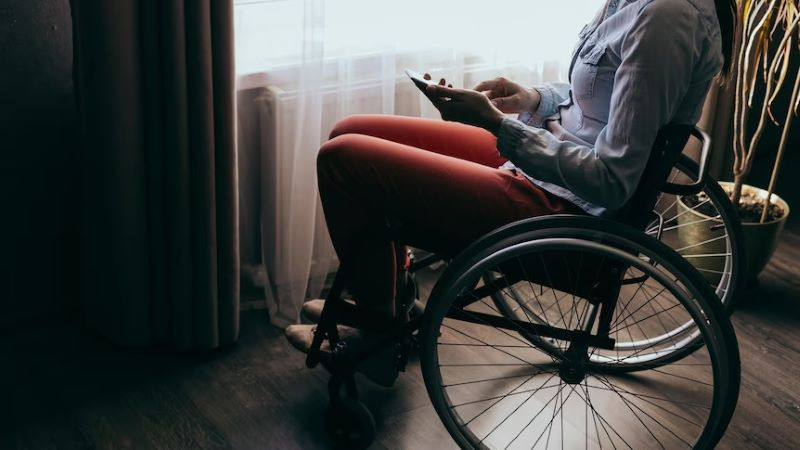
IN the fight against HIV and Aids and the pursuit of gender equality, the plight of women with disabilities in economic empowerment remains a crucial yet overlooked issue.
While sub-Saharan Africa continues to bear the brunt of the HIV and Aids epidemic, the disproportionate impact on the health and well-being of women is well-documented.
However, within this already marginalised group, women with disabilities face even greater challenges.
Shockingly, despite global estimates highlighting the significant burden of sexual and reproductive conditions on women, there is still no visible recognition or relevant data on the economic empowerment of women with disabilities.
This opinion piece delves into the nuances and societal interpretations of inclusivity, integration, and participation, questioning and exploring the extent to which these terms have truly transformed the economic statuses of women, particularly those with disabilities, both locally and nationally.
Inclusivity, integration and participation are powerful concepts often discussed over the years, in various and diverse contexts, including women's empowerment and economic advancement.
By examining concrete examples and cases at the community and national levels, there is need to uncover the realities and progress made, as well as the challenges that persist.
Participation, participative or participatory are terms that have been in the game for decades.
- EOS data analytics provides technology for modernising agriculture
- Zim agric production remains low: WB
- Collateral registry and access to credit
- U.S. cuts off Burkina Faso from Africa duty-free trade program
Keep Reading
The terms are interchangeable, referring to active involvement and engagement in decision-making processes, enabling women, including those with disabilities, to have a voice and influence over matters that affect their lives.
At the community level, participatory initiatives involve forming women-led self-help groups or involving women with disabilities in community development projects.
Nationally, establishing platforms for the meaningful participation of women with disabilities in policy development and implementation can lead to more wide-ranging and effective outcomes.
However, the under-representation and marginalisation of women with disabilities in decision-making processes continue to hinder their economic participation and empowerment.
Arguably, integration, can be interchangeable with inclusion, incorporation, assimilation or mainstreaming or to some extent cross-cutting.
All these terms will be entailing the seamless inclusion of individuals into existing systems, whether social, educational or economic.
For women with disabilities, integration can mean equal access to education, healthcare and employment opportunities.
At the community level, integrated projects could involve partnerships between disability organisations and local businesses to provide skills-building workshops and internships.
Nationally, the integration of disability rights into legislation and policies can foster an environment that recognises and supports the economic empowerment of women with disabilities.
Despite progress in some regions, the integration of women with disabilities into mainstream systems remains a challenge, as societal attitudes and structural barriers often persist.
In theory, inclusivity implies creating an environment where all individuals, regardless of their background, abilities or characteristics, have equal access to opportunities and resources.
However, translating this concept into actionable change requires addressing deeply ingrained biases and dismantling barriers.
The reason why it emerged and evolved over the past few years, and arguably surpassing the earlier two terms in terms of preferred use contextually.
At the community level, examples of inclusive initiatives include vocational training programmes, such as culinary and food services training, healthcare and caregiving, farming and gardening, technology and digital skills training, projects that cater specifically for the needs of women with disabilities, ensuring accessibility, and providing necessary accommodations.
On a national scale, policies promoting inclusive hiring practices and workplace accommodations can create a more level-playing field. However, the reality is that many communities and nations still struggle to fully embrace inclusivity, leaving women with disabilities at a disadvantage.
Global estimates suggest that sexual and reproductive conditions account for 18,4% of the burden of disease and 32% of the burden of disease among women aged 15 to 44.
Thus, this narrative emphasises the urgent need to address and prioritise sexual and reproductive health in order to improve the overall health outcomes and quality of life for women worldwide.
The global statistics of sexual and reproductive conditions accounting for 18,4% of the burden of disease among all women highlights the substantial toll these issues have on women’s health.
It underscores the fact that sexual and reproductive health problems are not insignificant or isolated, but rather have a profound impact on the overall well-being of women across different age groups and regions.
These statistics underscore the pressing need for comprehensive and accessible sexual and reproductive health services, education and support systems.
By addressing and prioritising these issues, policymakers, healthcare providers and communities can work together to reduce the burden of disease, improve health outcomes and promote gender equality and economic empowerment.
It is essential to empower women with knowledge, choices, and resources to make informed decisions about their sexual and reproductive health, ultimately leading to healthier, more equitable and sustainable communities.
Furthermore, the specific figure of 32% of the burden of disease among women aged 15 to 44 underscores the heightened vulnerability and health risks faced by women during their reproductive years.
This period encompasses critical stages of sexual and reproductive health, including sexual debut, family planning, pregnancy, childbirth and menopause.
The burden of disease in this age group reflects the wide-ranging challenges and health consequences associated with sexual and reproductive conditions, which can affect fertility, maternal health, and overall quality of life for women.
The burden of disease refers to the impact of specific health conditions on individuals or populations, taking into account factors such as mortality, morbidity, and disability.
Within the context of sexual and reproductive health, this burden encompasses a wide range of conditions, including but not limited to, sexually transmitted infections (STIs), maternal health complications, unintended pregnancies, cervical cancer and infertility.
The intertwined issues of women’s health, poverty and economic empowerment are inherently connected, yet the disconnection persists.
Despite decades of discourse and efforts to address gender disparities, women with disabilities have largely been left on the periphery of community projects and national initiatives.
Disability inclusivity, integration, and participation, though widely discussed, have failed to translate to substantial change for economically marginalised women, especially those with disabilities.
While poverty and gender inequality are recognised as pivotal determinants of sexual and reproductive health, their impact on economic empowerment is equally profound.
However, the lack of attention given to women with disabilities in these discussions perpetuates their invisibility and exacerbates their marginalisation.
Governments and civil society must recognise that the challenges posed by health issues such as HIV, STIs, teenage pregnancies, and maternal mortality extend beyond the medical realm, encompassing social and intellectual dimensions.
To genuinely address the complex web of problems facing women with disabilities, a comprehensive multi-level approach is imperative.
This approach should go beyond the biological aspects and consider the social, intellectual, economic and policy dimensions of HIV, gender empowerment, and reproductive health.
Only by adopting a holistic perspective that acknowledges the physical, mental and social well-being of women on matters of sexuality and reproduction can we begin to dismantle the barriers that hinder the economic empowerment of women with disabilities.
It is high time for society to recognise the invisible struggle faced by women with disabilities in their quest for economic empowerment.
The current lack of attention and relevant data perpetuates their marginalisation and denies them the opportunities they deserve.
By embracing a multi-level approach that addresses the interconnectedness of health, poverty, gender equality, and economic empowerment, we can pave way for a more inclusive and just society.
Let us ensure that no woman, regardless of her disabilities, remains unseen and unheard on her journey towards economic independence and empowerment.









